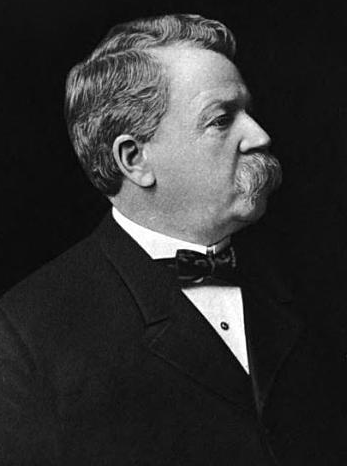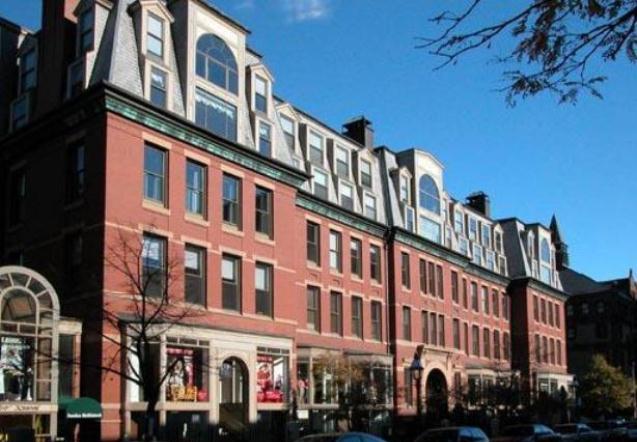
Source: S. Eliot, 1911, Biographical History of Massachusetts 1911. (Click to enlarge image)
Architect George Albert Clough designed the Calf Pasture Pumping Station. Appointed the first City Architect of Boston in 1874, Clough oversaw the design, construction, and renovation of a number of prominent public structures in Boston during his nine-year tenure. These included: Boston Latin School, Boston English School, Suffolk County Courthouse, Congress Street Fire Station, and the Prince School on Newbury Street. Clough also submitted the first plans to be accepted for the Boston Public Library in 1880, and oversaw the first restoration of the Massachusetts State House in 1881. He played a role in the design of the waterworks systems in Chestnut Hill and Framingham, which provided Boston with a much needed alternate water source.
Born on March 27, 1843 in Blue Hill, Maine, Clough began his career working as a draughtsman for his father, who was a shipbuilder. After his father’s death in 1863, Clough moved to Boston to formally study architecture. He was employed and trained at the firm of Snell and Gregerson, where he stayed until 1869, when Clough left to open his own architectural office. He held the office of City Architect from 1874 to 1883.
((

Source: bostonluxuryresidential.com. (Click to enlarge image)
The Calf Pasture Pumping Station was George Clough’s final project as Boston’s City Architect, as its construction was awash with controversy. Clough and the Superintendent of Sewers, William H. Bateman, approved the plans for the Main Drainage Works System presented by Ellis S. Chesbrough and his commission in 1876, and construction began on the Calf Pasture in 1879.
The City Council expected the construction of the facility would be carried out by skilled craftsmen from Boston. But, Clough dismissed the primary laborers and replaced them with men of his choosing; this sparked controversy, as the members of Boston City Council believed Clough’s new men were poor craftsmen.
Earlier, in 1881, an alderman on the City Council had accused Clough of neglecting improvements in the ventilation of the Council Chambers of City Hall, and called for his replacement as City Architect. On April 9, 1833, Clough lost the council re-election as city architect; he was replaced by Charles J . Bateman (1851-1940) who oversaw the completion of the pumping station.
After his removal from the post of city architect, Clough returned to private practice. In 1905 he established the firm Clough and Wardner and went on to design some 84 public schools in Massachusetts, New York, Maine, and Pennsylvania. He died in Brookline, Massachusetts in January 1911. Fourteen buildings designed by Clough, including the Calf Pasture Pumping Station, are now on the National Register of Historic Places.
Sources Consulted:
Boston City Council. Reports for the Proceedings for Municipal Years 1876, 1883, 1885. Boston: Rockwell and Churchill.
Clark, Eliot C. Main Drainage Works of the City of Boston. Boston: Rockwell and Churchill, 1885.
Engineering News and American Contact Journal, February 17, 1883, pg 163.
National Register of Historic Places Registration Form for the Calf Pasture Pumping Station.
Obituary of George Clough, Ellsworth (Maine) American, January 11, 1911, p. 6.
Marwell, Stuart; Burke, Bryan; Hudak, Andrew, “Calf Pasture Pumping Station”, Boston Public Library, BRA (Boston Redevelopment Authority) collection
Photo Credits:
- Samuel Atkins Eliot, ed. “George Albert Clough.” Biographical History of Massachusetts: Biographies and Autobiographies of the Leading Men in the State, Volume 3. Boston: Massachusetts Biographical Society, 1911.
- Boston Luxury Residential: bostonluxuryresidential.com.
